Analyzing Innovation Process, Impact, and Reflection
VerifiedAdded on 2022/11/30
|9
|531
|149
Presentation
AI Summary
This presentation provides a comprehensive overview of the innovation process, emphasizing its significance in business development. It begins by defining innovation and its distinction from general creativity, then proceeds to detail the innovation process, which includes identifying the problem, producing solutions, and conducting market analysis. The presentation highlights the impact of the innovation process on companies, especially concerning the competitive edge that innovation offers. It also showcases how innovation helps in improving existing products and services. Furthermore, the presentation applies Kolb’s experiential learning model to reflect on the innovation process, discussing its four stages: concrete experience, reflective observation, abstract conceptualization, and active experimentation. The conclusion emphasizes the importance of innovation skills for career development and the need for businesses to continuously innovate to retain customers and gain a competitive advantage. References from various academic journals are also included.
1 out of 9
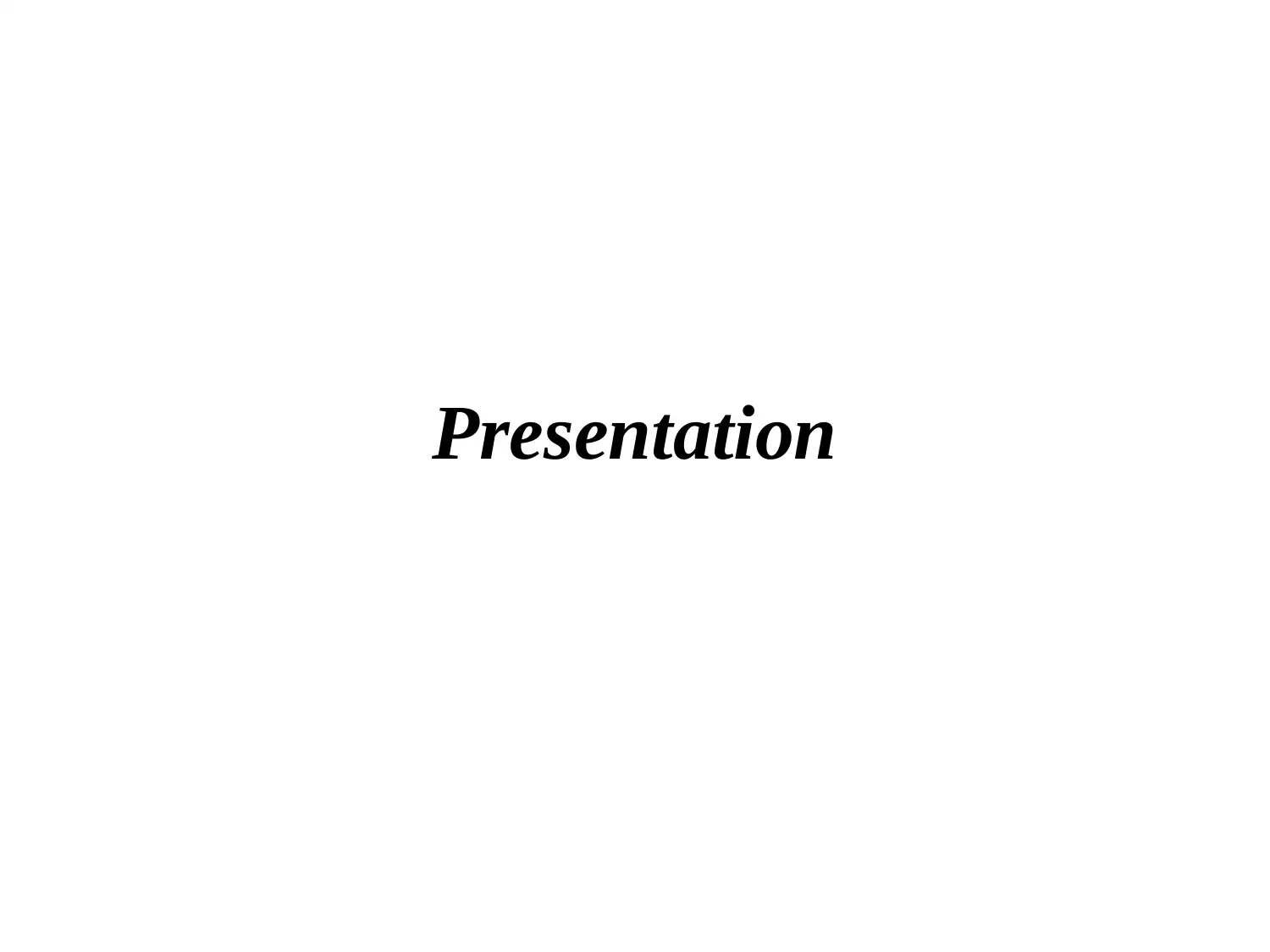
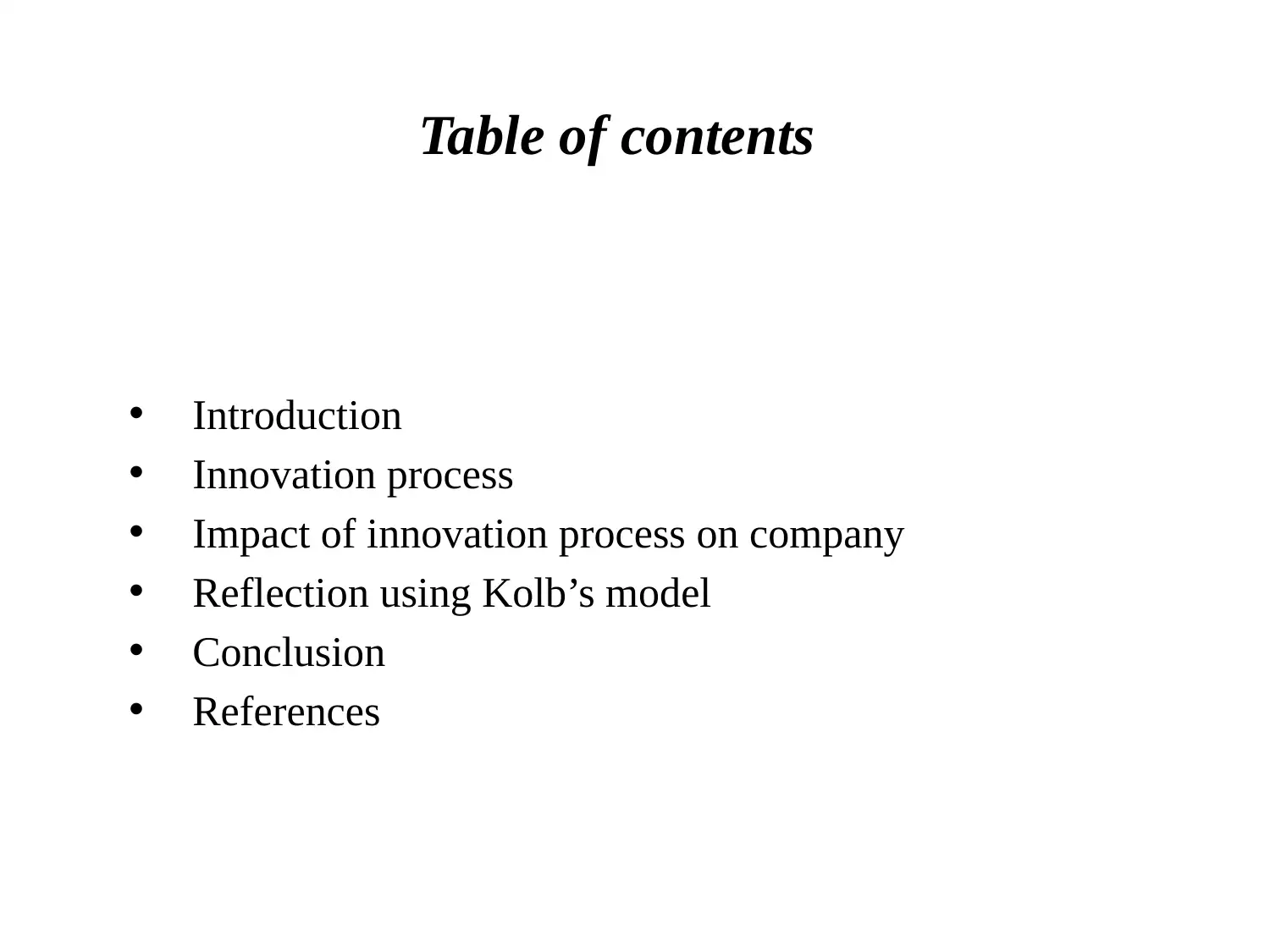
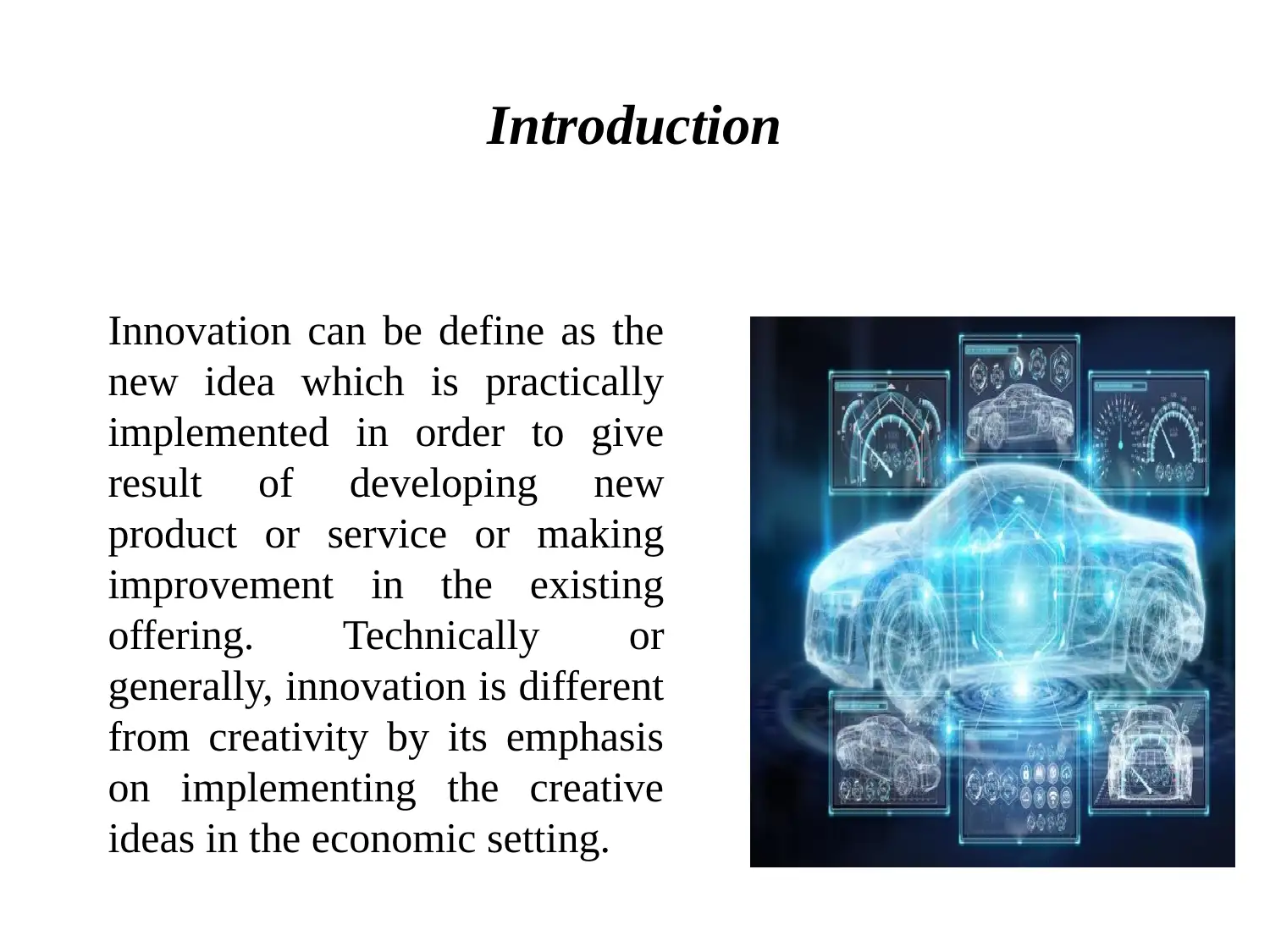




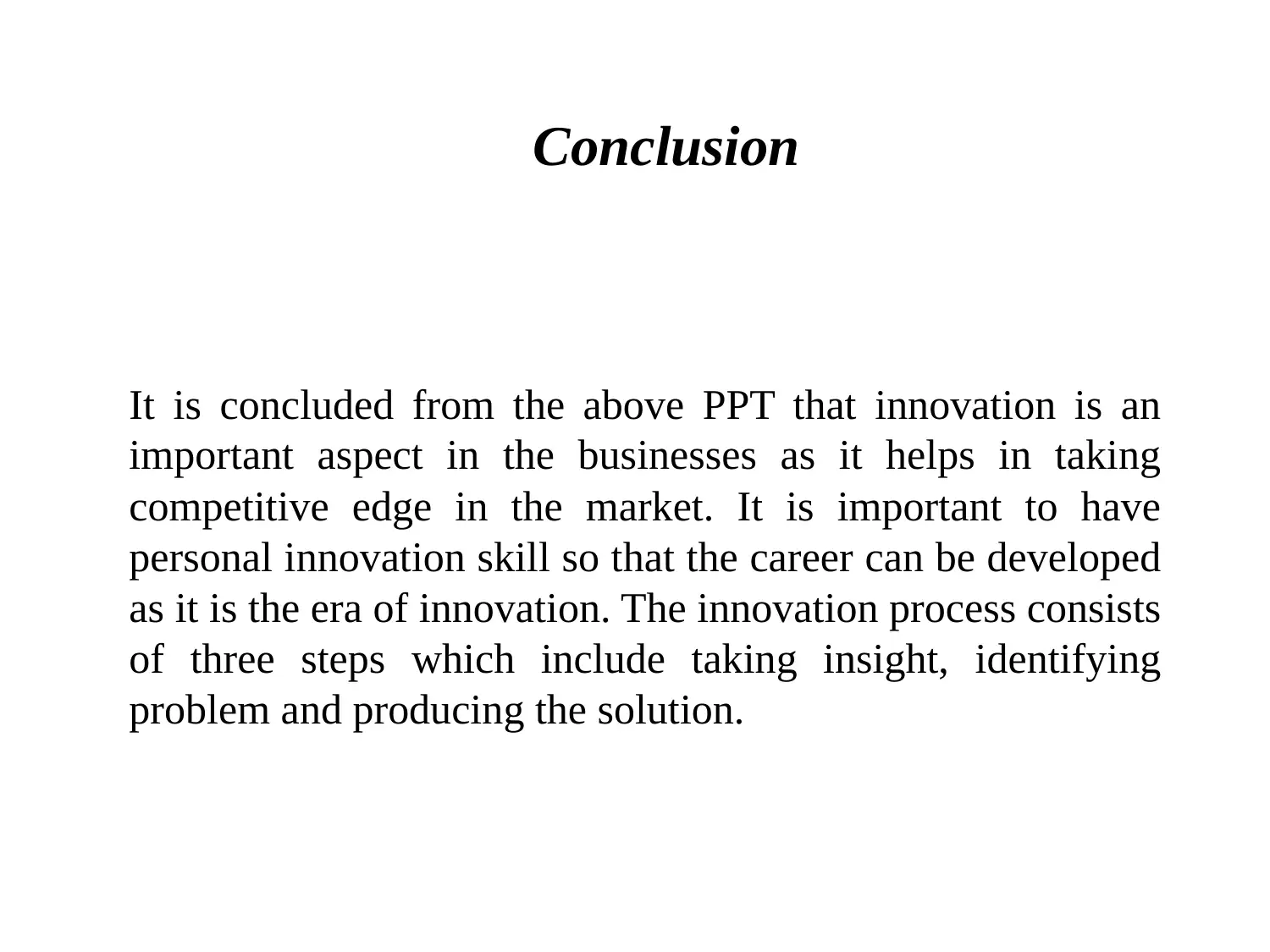
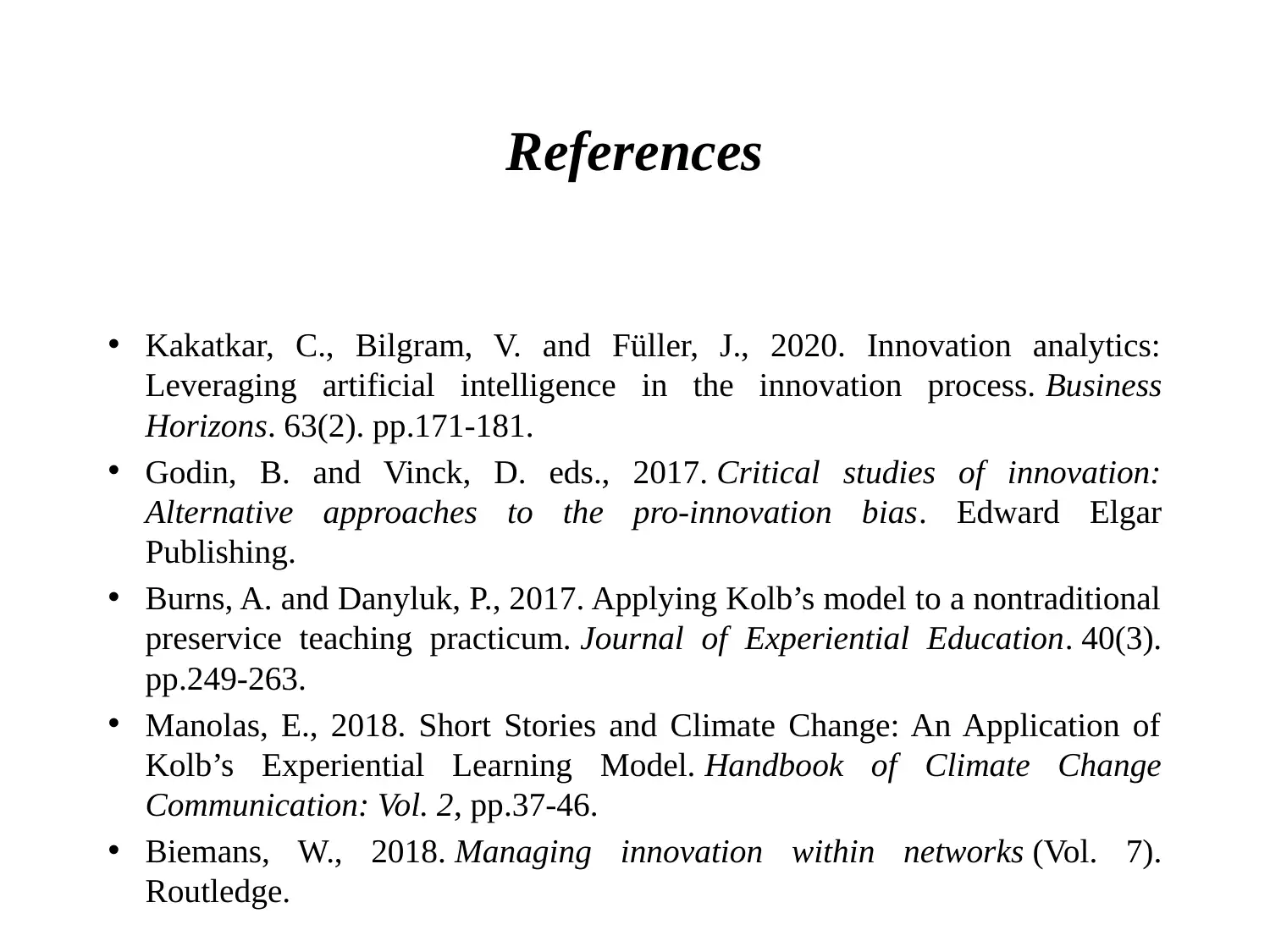







![[object Object]](/_next/static/media/star-bottom.7253800d.svg)